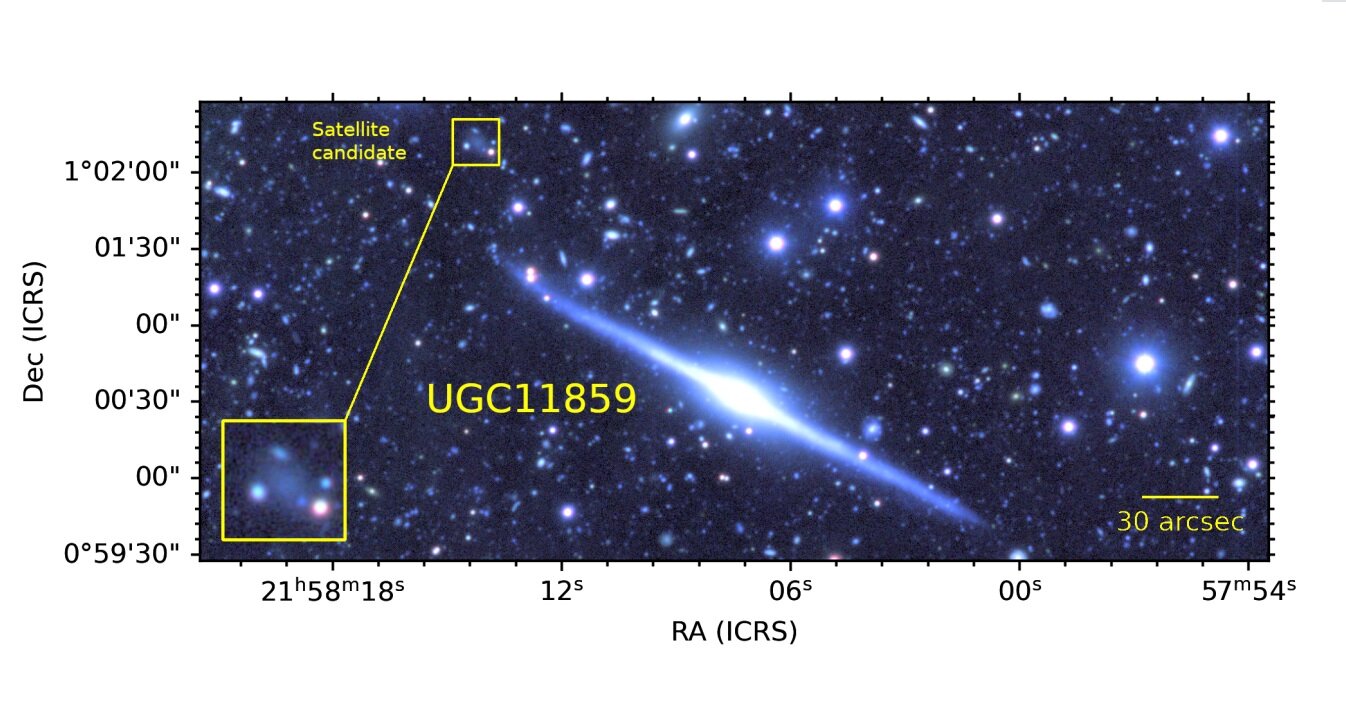Astronomers have studied the spiral galaxy UGC 11859. We can see it from the edge, so we can estimate how thin it is. However, scientists were more interested in the curvature of the disk by something invisible.

Ultra-thin galaxy
Scientists from the University of Valparaiso in Chile published in July 2023 a study of the galaxy UGC 11859, which they studied using a large telescope in the Canary Islands. This spiral system is interesting because we can see it from the edge, and therefore we can evaluate the structure of the disk.
UGC 11859 is located at a distance of 167.5 million light-years from us. Scientists believe that it is relatively isolated from other star systems; that is, in the last few billion years, it has not experienced serious gravitational influences. In addition, the galaxy has an extremely thin disk.
However, scientists decided to investigate it in more detail on the neutral hydrogen wave line. And here a surprise awaited them. The galaxy shows asymmetry along the plane of the disk; that is, the amount of interstellar gas changes in an unexpected way.
Invisible influence
When scientists studied the UGC 11859 spectrogram in more detail, they found several features that this ultrathin galaxy demonstrated at once. At a distance of approximately 78 thousand light-years from the center of the system, there is a sharp break in the light curve. It looks like a flare that gradually increases, and then abruptly stops.
According to scientists, such a sharp fracture indicates that the idea of UGC 11859 as an isolated galaxy is not entirely correct. Scientists believe that it could have appeared only under the influence of something that remains invisible to them.
Also, a detailed study of UGC 11859 suggests that it has a moon. Interestingly, it is located exactly behind the curved part of the disk at a small angular distance from it. However, the fact that this is indeed another star system gravitationally bound to an ultrathin galaxy has yet to be proved.
According to phys.org
Follow us on Twitter to get the most interesting space news in time
https://twitter.com/ust_magazine
